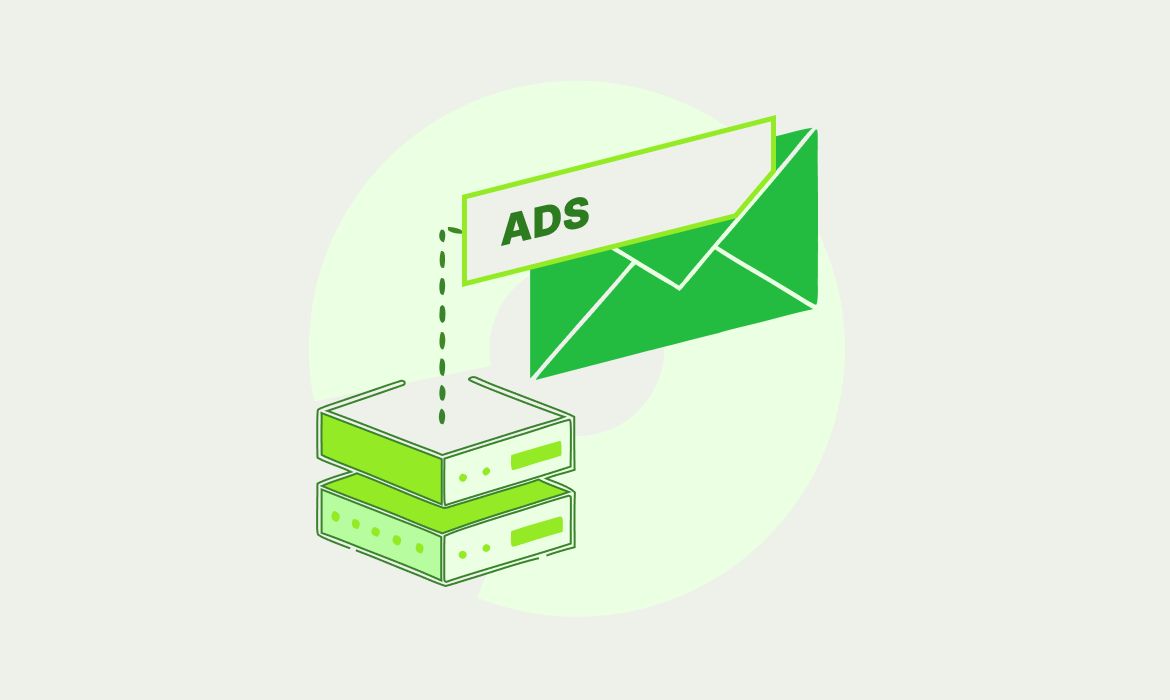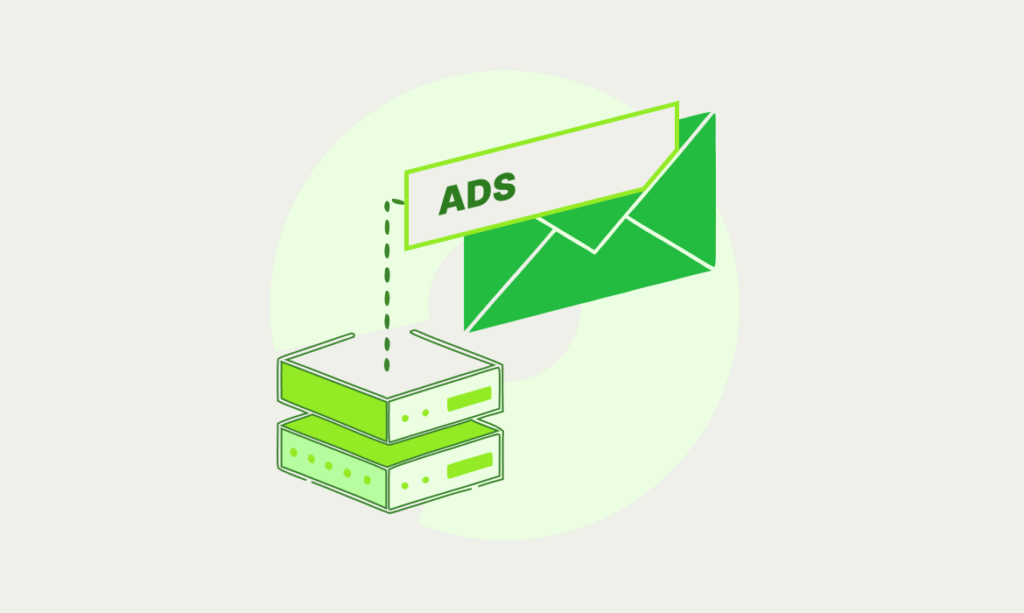Sending mass emails effectively requires far more than clicking “send” to thousands of contacts. The stark reality is that 85% of business emails never reach their intended inbox, instead landing in spam folders or being blocked entirely by ISP filters. This deliverability crisis costs businesses billions in lost revenue annually, making the choice of mass email platform one of the most critical decisions in modern digital marketing.
The best mass email platforms combine sophisticated sending infrastructure with deliverability expertise, advanced automation capabilities, and data-driven optimization tools. These platforms transform email from a simple communication channel into a precision marketing instrument capable of generating remarkable ROI – with top performers achieving returns of $42 for every dollar spent on email marketing.
The Technical Foundation of Mass Email Success
Understanding what separates professional mass email platforms from basic tools requires examining the complex technical infrastructure that enables reliable high-volume sending. When you send an email through Gmail or Outlook, you’re sharing IP addresses with millions of other users, including potential spammers. This shared reputation model works fine for personal communication but becomes a liability when sending marketing messages at scale.
Professional mass email services operate on entirely different infrastructure principles:
IP Reputation Management
Every email sent from an IP address contributes to that address’s reputation score with major ISPs. Professional platforms manage this through sophisticated IP pooling strategies:
Dedicated IP Pools: High-volume senders receive dedicated IP addresses isolated from other senders. This prevents reputation contamination from poor sending practices of other users. However, dedicated IPs require careful warming – gradually increasing send volume over 4-6 weeks to establish positive reputation.
Shared IP Management: For smaller senders, platforms maintain carefully curated shared IP pools. They monitor sender behavior continuously, removing problematic senders before they damage the pool’s reputation. Advanced platforms like Emercury segment shared pools by industry and sending patterns, ensuring compatible senders share resources.
IP Rotation and Load Balancing: Sophisticated platforms distribute sending volume across multiple IPs to prevent any single address from triggering volume-based spam filters. This rotation happens transparently, with algorithms determining optimal distribution based on recipient domains, message types, and historical performance.
Authentication Protocol Implementation
Email authentication has evolved from optional best practice to mandatory requirement. Professional platforms implement multiple authentication layers:
SPF (Sender Policy Framework): This DNS record specifies which IP addresses can send email for your domain. Mass email platforms automatically configure SPF records and monitor for conflicts that could impact delivery.
DKIM (DomainKeys Identified Mail): DKIM adds cryptographic signatures to email headers, proving messages haven’t been tampered with during transmission. Professional platforms generate and manage DKIM keys, rotating them periodically for security.
DMARC (Domain-based Message Authentication, Reporting, and Conformance): DMARC builds on SPF and DKIM, providing policy enforcement and reporting. Advanced platforms offer DMARC report parsing and analysis, helping identify authentication failures before they impact delivery.
BIMI (Brand Indicators for Message Identification): The newest authentication standard displays verified brand logos in recipient inboxes. Forward-thinking platforms like Emercury already support BIMI implementation, providing competitive advantage through improved inbox visibility.
Sending Infrastructure Architecture
The technical architecture of mass email platforms determines their reliability and scalability:
Queue Management: Unlike personal email that sends immediately, mass email platforms implement sophisticated queuing systems. Messages enter processing queues where they’re analyzed for content issues, authenticated, and scheduled for optimal delivery timing.
Throttling Algorithms: ISPs impose rate limits on incoming email to prevent server overload. Professional platforms implement adaptive throttling that respects these limits while maximizing delivery speed. Advanced systems adjust throttling dynamically based on real-time ISP feedback.
Feedback Loop Processing: Major ISPs provide feedback loops reporting spam complaints directly to senders. Mass email platforms process these loops automatically, suppressing complainers and analyzing patterns to prevent future issues.
Bounce Handling: Bounces fall into two categories – hard bounces (permanent failures) and soft bounces (temporary issues). Professional platforms categorize bounces accurately, implementing retry strategies for soft bounces while immediately suppressing hard bounces to protect sender reputation.
Deep Dive: Top 10 Best Mass Email Platforms
1. Emercury – The High-Volume Deliverability Leader
Emercury represents a fundamental shift in how mass email platforms approach deliverability and customer success. Built from the ground up for performance marketers and high-volume senders, the platform combines enterprise-grade infrastructure with unprecedented human expertise.
The Deliverability Difference
What truly sets Emercury apart is their obsessive focus on deliverability through both technology and human expertise. Every account, regardless of size, receives a dedicated delivery analyst – an industry veteran who actively monitors your sending patterns, domain health, and campaign performance.
This isn’t passive monitoring. Your delivery analyst proactively identifies potential issues before they impact performance. They’ll notice if your engagement rates drop with a specific ISP and investigate immediately. They’ll spot authentication problems before emails start bouncing. They’ll even review your email content and suggest modifications to avoid spam triggers.
The technology supporting these analysts is equally impressive:
Domain Trending Reports: Real-time monitoring of your domain’s reputation across all major ISPs. These reports show reputation trends over time, enabling early intervention before problems escalate. You’ll see exactly how each ISP views your domain, with actionable recommendations for improvement.
List Analysis System: This proprietary technology scans your email lists continuously, identifying problematic addresses before you send. It detects:
- Spam traps (both pristine and recycled)
- Role addresses likely to complain
- Temporary email addresses
- Malformed addresses that could trigger filters
- Engagement prediction scores for each subscriber
Content Scoring Engine: Every email passes through Emercury’s content analysis before sending. This engine examines:
- Spam trigger words and phrases
- Image-to-text ratios
- Link reputation and destination analysis
- HTML structure and coding issues
- Authentication alignment
- Subject line analysis
The engine provides a detailed report with specific recommendations, not just a generic “spam score.” You’ll know exactly what to change and why.
Advanced Automation Capabilities
Emercury’s Journey Builder revolutionizes email automation with visual workflow creation that handles complex logic without requiring technical expertise. Key capabilities include:
Behavioral Triggers: Go beyond basic opens and clicks. Trigger sequences based on:
- Website behavior (via JavaScript tracking)
- Purchase patterns and order values
- Email engagement scoring
- Custom events from your application
- Time-based progressions
- Predictive churn indicators
Dynamic Segmentation: Segments update in real-time as subscriber behavior changes. Create segments based on:
- Engagement recency and frequency
- Lifetime value calculations
- Product category interests
- Geographic and demographic data
- Custom field combinations
- Predictive modeling outputs
AI-Powered Optimization: Emercury’s AI features genuinely improve results:
- Subject line generation trained on billions of sends
- Send time optimization per individual subscriber
- Content personalization recommendations
- Engagement prediction for list segments
- Automated re-engagement campaign triggers
Infrastructure Built for Scale
Emercury’s infrastructure handles everything from startup newsletters to enterprise campaigns sending 50 million emails daily:
Sending Capacity: The platform processes over 1 billion emails monthly across their infrastructure. Their architecture scales horizontally, adding capacity seamlessly as client needs grow.
Redundancy and Reliability: Multiple data centers with automatic failover ensure 99.99% uptime. Real-time replication means no data loss even in catastrophic failures.
API Performance: RESTful APIs handle 10,000+ requests per second with sub-100ms response times. Webhooks deliver event data in real-time for seamless integration.
Global Delivery Network: Servers positioned globally minimize latency and improve delivery speeds to international recipients.
Pricing That Makes Sense
Emercury’s pricing philosophy reflects their focus on customer success rather than feature restrictions:
Subscriber-Based Plans: Starting at $275/month, scaling smoothly to enterprise levels. All features included at every tier – you’re paying for volume, not functionality.
CPM Plans: For high-volume senders with fluid lists, CPM (cost per thousand) pricing provides predictability. Plans range from $800/month for 1 million sends to custom pricing for 50 million+ monthly sends.
No Hidden Costs: Unlike competitors who charge extra for dedicated IPs, advanced features, or support, Emercury includes everything in base pricing. Even custom development and integration assistance come standard.
Real-World Success Stories
Emercury’s effectiveness shows in client results:
- An affiliate network increased inbox placement from 67% to 94% within 60 days
- An e-commerce company reduced spam complaints by 78% while doubling open rates
- A financial services firm successfully delivered 25 million monthly emails with 99.2% delivery rate
- A publishing company improved click-through rates by 156% using AI optimization
2. Brevo (Formerly Sendinblue) – The Multichannel Marketing Platform
Brevo represents the evolution of email marketing into comprehensive multichannel communication. Their transformation from Sendinblue reflects a broader vision: businesses need unified platforms managing all customer communication channels. However, this breadth comes with tradeoffs—support is primarily ticket and chat-based, and users report that getting help with deliverability issues often means navigating knowledge bases rather than speaking with experts.
Unified Communication Architecture
Brevo’s strength lies in seamlessly blending email, SMS, WhatsApp, and chat into cohesive customer journeys:
Channel Orchestration: Create workflows that move fluidly between channels based on engagement. For example:
- Send welcome email
- If no open within 48 hours, send SMS
- If SMS clicked, trigger WhatsApp conversation
- Route high-value leads to live chat
This orchestration happens through a visual builder where channels become interchangeable components in your communication flow.
Unified Contact Profiles: Every interaction across channels contributes to comprehensive contact profiles. See email opens alongside SMS responses and chat transcripts, enabling truly personalized communication.
Cost Optimization: The platform intelligently routes messages through the most cost-effective channel while maintaining effectiveness. High-value messages might go through email first, falling back to more expensive SMS only when necessary.
Advanced Marketing Automation
While positioned as accessible for small businesses, Brevo’s automation capabilities rival enterprise platforms:
Machine Learning Scoring: Brevo’s ML models analyze engagement patterns to score contacts on:
- Purchase probability
- Churn risk
- Optimal channel preference
- Best send times
- Content preferences
Dynamic Content Assembly: Beyond basic personalization, Brevo assembles entire email sections dynamically:
- Product recommendations based on browsing
- Location-based content and offers
- Behavior-triggered content blocks
- Real-time inventory integration
- Weather-based messaging
Transactional Email Integration: Unlike platforms that separate marketing and transactional email, Brevo handles both through the same infrastructure. This enables sophisticated scenarios like:
- Order confirmations that include marketing content
- Password resets that re-engage inactive users
- Shipping notifications with product recommendations
Deliverability Infrastructure
Brevo invests heavily in deliverability, though approaching it differently than specialized providers:
Shared IP Strategy: Rather than pushing dedicated IPs, Brevo maintains shared pools segmented by sending patterns, industry, geography, and engagement. This approach works for many senders but means your reputation is partially dependent on other users in your pool. Dedicated IPs are available but require additional fees and self-managed warming—there’s no dedicated deliverability analyst included to guide the process.
Proactive Monitoring: Their system automatically detects deliverability issues and takes corrective action:
- Throttles sending to problematic domains
- Adjusts content that triggers filters
- Modifies sending patterns to improve engagement
- Alerts users to list quality issues
ISP Relationships: Brevo maintains direct relationships with major ISPs, participating in feedback loops and allowlisting programs that benefit all users.
Pricing and Scalability
Brevo’s pricing model accommodates businesses from startup to enterprise:
Free Tier: 300 emails daily with no subscriber limit provides genuine testing ability. Includes all features except advanced reporting and priority support—though “all features” comes with Brevo branding on emails.
Email Plans: Starting at $25/month for 20,000 emails, scaling to custom enterprise pricing. Unusual in the industry, unused emails roll over for up to 12 months. Note that removing Brevo branding requires upgrading to paid plans, and dedicated IP addresses cost extra.
SMS Add-ons: SMS pricing varies by country but integrates seamlessly with email plans. Bulk purchases reduce per-message costs significantly.
Integration Ecosystem
Brevo’s integration library spans 150+ applications:
E-commerce: Deep integrations with Shopify, WooCommerce, and Magento synchronize customer data, purchase history, and abandoned carts automatically.
CRM Systems: Bidirectional sync with Salesforce, HubSpot, and Pipedrive ensures marketing and sales alignment.
Custom Integrations: RESTful APIs and webhooks enable custom integrations. Their PHP, Python, and Node.js SDKs accelerate development.
3. MailerLite – Simplicity Meets Functionality
MailerLite occupies a unique position in the email marketing landscape. While marketing themselves as the simple, affordable option, they’ve managed to include features typically reserved for enterprise platforms. This balance attracts over 1 million customers globally.
The Philosophy of Simplicity
MailerLite’s approach to simplicity goes beyond just clean interfaces:
Progressive Disclosure: Features reveal themselves as users need them. Beginners see basic options while advanced users can access sophisticated tools. This prevents overwhelming new users while satisfying power users.
Opinionated Defaults: Rather than providing endless options, MailerLite makes intelligent default choices:
- Automatically mobile-optimized templates
- Pre-configured automation workflows
- Suggested send times based on subscriber data
- Optimal image compression settings
Visual-First Design: Every feature emphasizes visual interaction:
- Drag-and-drop everything (not just email builders)
- Color-coded analytics for quick understanding
- Visual automation workflows
- Image-centric template gallery
Hidden Power Features
Beneath the simple exterior, MailerLite includes capabilities that surprise even experienced marketers:
Advanced Segmentation: Create complex segments using:
- Behavioral combinations (opened X but not Y)
- Time-based criteria (joined over 30 days ago)
- Custom field calculations
- Engagement scoring
- Predictive analytics (in beta)
E-commerce Automation: Despite not marketing heavily to e-commerce, MailerLite provides:
- Abandoned cart recovery
- Product recommendation engine
- Purchase-based segmentation
- Revenue tracking
- Customer lifetime value calculation
Developer-Friendly Features:
- RESTful API with comprehensive endpoints
- Webhook notifications for all events
- Custom HTML template support
- JavaScript event tracking
- Embedded form customization
Website Builder Integration
MailerLite’s website builder represents ambitious scope expansion:
Landing Page Creator: Build unlimited landing pages with:
- Mobile-responsive templates
- A/B testing capability
- Custom domain mapping
- SSL certificates included
- Form integration
Full Website Creation: Recent additions allow building complete websites:
- Multi-page support
- Blog functionality
- E-commerce integration
- SEO optimization tools
- Analytics integration
This positions MailerLite as a complete digital marketing platform for small businesses, not just email marketing.
Deliverability Approach
MailerLite takes a conservative approach to deliverability that works well for their target market:
Strict Approval Process: New accounts undergo manual review, preventing spammers from damaging shared resources. While this protects overall deliverability, it frustrates legitimate users who may wait days for approval. Once approved, support is primarily self-service through documentation—there’s no dedicated account manager or deliverability expert included even on higher-tier plans.
List Quality Enforcement: The platform automatically:
- Rejects purchased lists
- Identifies and removes role addresses
- Flags suspicious subscription patterns
- Requires double opt-in for certain industries
Simplified Authentication: MailerLite handles technical authentication setup automatically, perfect for non-technical users. Advanced users can customize settings when needed.
Pricing Evolution
MailerLite’s pricing has evolved significantly:
Free Plan Changes: Originally offering 1,000 subscribers free forever, they’ve significantly restricted the offering:
- Limited automation workflows
- Basic reporting only
- MailerLite branding required on all emails
- No priority support
- No access to advanced segmentation
This represents a broader industry trend of platforms using feature-gating to push users toward higher tiers—a practice that frustrates users who signed up expecting certain capabilities.
Growing Business Plans: Paid plans start at $10/month but scale aggressively:
- 1,000 subscribers: $10/month
- 10,000 subscribers: $65/month
- 50,000 subscribers: $250/month
- 100,000+: Custom pricing
Feature Gating: Unlike their original “simplicity” philosophy, MailerLite now locks numerous features behind higher tiers:
- Advanced segmentation (should be standard)
- Custom HTML editing
- Priority support
- Dedicated IP addresses
- A/B testing for automations
- Auto-resend to non-openers
This creates situations where users discover the feature they need requires a tier upgrade—a frustrating experience that contradicts the platform’s “simple and affordable” marketing.
4. SendGrid (Twilio SendGrid) – The Developer’s Email Platform
SendGrid represents email infrastructure as developers envision it: powerful APIs, comprehensive documentation, and minimal marketing fluff. This developer-centric approach is a double-edged sword—while technical teams appreciate the flexibility, marketing teams and non-developers often find the platform intimidating. There’s no drag-and-drop simplicity here; you’re expected to build or code most of what you need.
API-First Architecture
SendGrid’s entire platform builds around their API:
RESTful Design: Clean, predictable endpoints following REST principles:
POST /v3/mail/send
GET /v3/stats
PUT /v3/templates/{template_id}
DELETE /v3/suppression/bounces/{email}
Language Support: Official libraries for:
- Node.js with TypeScript definitions
- Python with async support
- PHP with Composer integration
- Ruby with Rails helpers
- Go with concurrent sending
- Java with Spring Boot integration
- C# with .NET Core support
Event Webhooks: Real-time event delivery for:
- Delivered messages
- Opens and clicks
- Bounces and deferrals
- Spam reports
- Unsubscribes
- Custom engagement events
Webhooks include retry logic, batch delivery, and cryptographic signatures for security.
Email Infrastructure at Scale
SendGrid’s infrastructure handles massive volume with impressive reliability:
Global Delivery Network:
- 8 data centers across 4 continents
- Automatic geographic routing
- 99.99% uptime SLA
- Sub-second API response times
Queue Management: Sophisticated queuing handles:
- 100,000+ messages per second throughput
- Priority queue jumping for transactional email
- Automatic retry with exponential backoff
- Dead letter queue for failed messages
IP Pool Management:
- Automated IP warming for new addresses
- Dynamic pool assignment based on reputation
- Automatic rotation for load distribution
- Real-time reputation monitoring
Marketing Campaign Features
While known for transactional email, SendGrid offers robust marketing tools:
Dynamic Templates: Create reusable templates with:
- Handlebars templating syntax
- Nested iterations and conditionals
- Custom helper functions
- Version control and rollback
- A/B testing variations
Contact Management: Advanced database features:
- Custom field schemas
- Segment building with SQL-like queries
- List upload with deduplication
- Engagement scoring algorithms
- GDPR compliance tools
Marketing Campaigns: Visual editor for non-developers:
- Drag-and-drop design
- Mobile preview
- Spam testing
- Send time optimization
- Campaign analytics
Deliverability Tools and Monitoring
SendGrid provides transparency into email performance:
Email Activity Feed: Search and filter all email events:
- Full message content storage (30 days)
- Advanced search syntax
- Event timeline visualization
- Troubleshooting diagnostics
Reputation Monitoring:
- IP reputation scoring
- Domain reputation tracking
- Blacklist monitoring
- Authentication validation
- ISP-specific metrics
Expert Services: Deliverability support is available but costs extra:
- Dedicated deliverability consultants (additional fee)
- Custom IP warming plans (additional fee)
- ISP relationship management (Premier tier only)
- Remediation assistance (additional fee)
Unlike platforms that include human deliverability expertise in base pricing, SendGrid’s API-first philosophy means hands-on support is treated as a premium add-on rather than a core service.
Pricing and Plans
SendGrid’s pricing reflects their dual nature:
Free Tier: 100 emails/day forever includes:
- Full API access
- Basic analytics
- Email validation
- Webhook support
Email API Plans: For developers sending transactional email:
- 50K emails: $19.95/month
- 100K emails: $34.95/month
- 200K emails: $89.95/month
- Custom volume pricing available
Marketing Campaigns: Marketing features cost extra on top of API plans:
- Basic: $15/month (marketing features only)
- Advanced: $60/month (advanced segmentation)
- Premier: Custom pricing (dedicated support)
This means a business needing both transactional and marketing email pays for two separate products. The total cost adds up quickly, and features like advanced segmentation that come standard on other platforms require upgrading to the $60/month tier.
Integration Ecosystem
SendGrid integrates deeply with modern development stacks:
Cloud Platforms:
- AWS marketplace listing with CloudFormation templates
- Azure native integration
- Google Cloud partner integration
- Heroku add-on with automatic provisioning
Frameworks and CMS:
- WordPress plugin with Gutenberg blocks
- Django mail backend
- Laravel mail driver
- Ruby on Rails ActionMailer
- Express.js middleware
Analytics and Monitoring:
- Datadog integration for metrics
- New Relic performance monitoring
- Splunk log aggregation
- Google Analytics e-commerce tracking
5. Mailchimp – The Marketing Platform Giant
Mailchimp’s evolution from simple email tool to comprehensive marketing platform represents both opportunity and challenge. With over 13 million users globally, they’ve successfully transitioned from startup darling to enterprise marketing suite, though not without controversy among longtime users.
The All-in-One Marketing Vision
Mailchimp now encompasses far more than email:
Customer Journey Builder: Create sophisticated, multichannel journeys:
- Email sequences based on behavior
- Social media ad retargeting
- Postcard mailing triggers
- SMS message integration
- Landing page interactions
- Purchase predictions
These journeys visualize as flowcharts, with branches based on user actions, timing, and predictive analytics.
Content Studio: Centralized asset management:
- Image library with Unsplash integration
- GIF creator and editor
- Logo and brand asset storage
- Template synchronization
- Team collaboration tools
- Version control
Commerce Integration: Deep e-commerce connections:
- Abandoned cart recovery (average 10% conversion)
- Product recommendation engine
- Purchase likelihood scoring
- Customer lifetime value prediction
- Win-back campaign automation
- Revenue attribution reporting
Advanced Segmentation and Personalization
Mailchimp’s segmentation capabilities have grown sophisticated:
Predictive Demographics: AI infers subscriber characteristics:
- Age and gender prediction
- Income level estimation
- Urban/suburban/rural classification
- Interest categorization
- Purchase behavior modeling
Lookalike Audiences: Find similar subscribers:
- Based on best customers
- High engagement segments
- Recent purchasers
- Custom criteria combinations
Dynamic Content: Personalize beyond merge tags:
- Product grids based on browsing
- Location-specific content
- Weather-triggered messaging
- Time-zone optimization
- Language localization
Creative Tools and AI
Mailchimp invests heavily in creative assistance:
Creative Assistant: AI-powered design help:
- Logo design from business description
- Brand color palette generation
- Font pairing suggestions
- Image style recommendations
- Copy tone analysis
Content Optimizer: Improve campaigns with:
- Subject line predictions
- Send time recommendations
- Content scoring
- Image alt text generation
- Accessibility checking
Deliverability Challenges
Mailchimp’s massive scale creates unique deliverability dynamics:
Shared Reputation Issues: With millions of users—including many inexperienced senders—maintaining IP reputation is an ongoing challenge:
- Strict sending limits throttle new accounts regardless of list quality
- Aggressive suppression sometimes flags legitimate engaged subscribers
- Automatic pausing can halt campaigns mid-send without warning
- Certain industries face mandatory review that can take days
- Account suspensions happen without clear explanation or appeal process
Users frequently report deliverability issues with no clear path to resolution, as support often provides generic troubleshooting rather than personalized analysis.
Compliance Enforcement: Automated systems sometimes frustrate legitimate senders:
- Keyword-based content rejection
- Industry restriction enforcement
- List source verification
- Engagement-based throttling
Limited Transparency: Mailchimp provides surprisingly limited deliverability insights:
- No IP reputation scores visible to users
- Basic ISP performance metrics only
- Limited blacklist monitoring
- Minimal authentication reporting
- No dedicated deliverability support on most plans
When deliverability issues arise, users are largely on their own. Support responses often consist of links to help articles rather than personalized diagnosis. There’s no option to speak with a deliverability expert unless you’re on enterprise pricing.
Pricing Complexity
Mailchimp’s pricing has become increasingly complex:
Contact-Based Pricing: All plans now price by contacts rather than emails sent—a model that penalizes businesses with large lists even if they send infrequently:
- 500 contacts: Free (with severe limitations)
- 50,000 contacts: $540/month (Standard plan)
- 100,000 contacts: $1,190/month
- 200,000+ contacts: Custom pricing
This contact-based approach means you pay the same whether you email your list once a month or daily. For high-volume senders, platforms with send-based pricing often prove significantly more economical.
Feature Restrictions: Significant features require higher tiers:
- Multivariate testing: Standard plan
- Advanced segmentation: Standard plan
- Custom branding: Standard plan
- Priority support: Premium plan only
Add-On Costs: Additional services increase expenses:
- Dedicated IP: Starting at $29.95/month
- Enhanced support: Variable pricing
- Additional users: Per-seat pricing
- Transactional email: Separate pricing
6. ActiveCampaign – Marketing Automation Mastery
ActiveCampaign represents the pinnacle of marketing automation sophistication accessible to mid-market businesses. While enterprise platforms like Marketo or Pardot offer similar capabilities, ActiveCampaign delivers them at a fraction of the cost with superior usability.
The Automation Revolution
ActiveCampaign’s automation builder remains industry-leading:
Visual Workflow Design: ActiveCampaign’s automation builder is powerful but notoriously complex:
- Unlimited workflow steps
- Parallel action paths
- Conditional branching
- Loop and wait conditions
- Goal tracking nodes
- Split testing paths
This flexibility comes at a cost—the learning curve is steep, and many users report spending weeks just understanding the interface. The platform presents all features with equal prominence, making it difficult to know where to start. For teams wanting to send effective email campaigns quickly, this complexity often becomes a barrier rather than an asset.
Behavioral Triggers: Beyond email interactions:
- Website visit tracking
- Page scroll depth
- Time on site
- Cart abandonment
- Form submissions
- Custom event tracking
- App usage patterns
- Support ticket creation
Machine Learning Enhancement: AI improves automations:
- Predictive send time per contact
- Content recommendations
- Win probability scoring
- Churn risk identification
- Optimal path analysis
CRM Integration Complexity
ActiveCampaign markets itself as having sales and marketing “built together,” but this integration comes with caveats. The full CRM functionality requires additional fees on top of already premium pricing. Many features that sound included—like lead scoring, win probability, and advanced pipeline management—are locked behind higher tiers or sold as add-ons.
Unified Contact Records: Every interaction visible:
- Email engagement history
- Website behavior
- Deal stage progression
- Task completion
- Note history
- Custom field updates
- Social media activity
Deal Automation: Automate sales processes:
- Lead scoring updates
- Deal stage movement
- Task creation for reps
- Notification triggers
- Pipeline velocity tracking
- Commission calculations
Sales Engagement: Enable sales teams:
- One-to-one email tracking
- Template library
- Sequence automation
- Calendar scheduling
- Call logging
- Performance analytics
Advanced Personalization
ActiveCampaign pushes personalization boundaries:
Dynamic Email Content: Change entire sections based on:
- Industry vertical
- Engagement level
- Purchase history
- Geographic location
- Device type
- Custom attributes
Predictive Content: AI selects optimal content:
- Subject line variations
- Call-to-action text
- Image selection
- Offer presentation
- Send time
Cross-Channel Personalization: Consistency across touchpoints:
- Email messaging
- Site messaging
- Chat responses
- SMS content
- Sales outreach
Attribution and Analytics
Understanding revenue impact drives ActiveCampaign’s analytics:
Multi-Touch Attribution: Track revenue sources:
- First touch attribution
- Last touch attribution
- Linear attribution
- Time-decay models
- Custom attribution
Revenue Reporting: Direct revenue tracking:
- Campaign attribution
- Automation performance
- Segment value analysis
- Customer lifetime value
- ROI calculations
Predictive Analytics: Forecast future performance:
- Revenue predictions
- Churn probability
- Engagement trends
- Optimal send times
- Content performance
Deliverability Infrastructure
ActiveCampaign balances features with deliverability:
Dedicated Deliverability Team: Human experts monitor:
- Sender reputation
- Authentication setup
- Content analysis
- ISP relationships
- Remediation support
Automated Protections: Systems prevent issues:
- Engagement-based sending
- List quality scoring
- Bounce processing
- Complaint handling
- Suppression management
Enterprise Features
Recent additions target larger organizations:
Custom Objects: Extend the database:
- Custom data structures
- Relationship mapping
- API accessibility
- Workflow integration
Advanced Security: Enterprise requirements:
- SSO integration
- Role-based permissions
- Audit logging
- Data encryption
- HIPAA compliance
White Labeling: Agency features:
- Custom domains
- Branded interfaces
- Client management
- Usage reporting
Pricing Reality Check
ActiveCampaign’s pricing scales aggressively with both contacts and features:
- Basic features for 25,000 contacts: $489/month
- At this price, you still don’t get advanced segmentation or conditional content
- CRM features require additional add-ons ($107-$179/month extra)
- Features considered standard elsewhere (like granular segmentation) require Professional tier
The platform essentially uses feature-locking to push users toward higher tiers. You might sign up expecting certain capabilities only to discover they require an upgrade—a frustrating experience that adds up quickly as your list grows.
7. GetResponse – Beyond Email Marketing
GetResponse’s unique position combining email marketing with webinar hosting creates interesting possibilities for businesses that specifically need both. However, this bundled approach means you’re paying for webinar functionality even if you only need email marketing. Their “all-in-one” approach now includes email, automation, webinars, landing pages, and basic CRM—but specialists in any single area often outperform GetResponse’s jack-of-all-trades approach.
Webinar Marketing Integration
GetResponse’s webinar feature isn’t an afterthought but a core platform component:
Native Webinar Hosting: Full-featured webinar platform:
- Up to 1,000 attendees (higher tiers)
- Screen sharing and presentations
- Interactive polls and surveys
- Chat and Q&A management
- Recording and replay hosting
- Registration page builder
Webinar-Email Automation: Seamless integration enables:
- Automated registration confirmations
- Reminder sequences
- Post-webinar follow-ups
- Attendance-based segmentation
- Replay distribution
- Survey deployment
Conversion Optimization: Webinar-specific features:
- Countdown timers in emails
- Scarcity messaging
- Social proof displays
- Urgency creation
- Call-to-action optimization
Conversion Funnel Builder
GetResponse’s funnel builder targets complete customer journey creation:
Pre-Built Funnel Templates: Start quickly with:
- Lead magnet funnels
- Webinar funnels
- Sales funnels
- Product launch sequences
- Membership sites
Integrated Components: Each funnel includes:
- Landing pages
- Pop-ups and forms
- Email sequences
- Payment processing
- Thank you pages
- Upsell/downsell pages
Performance Tracking: Monitor funnel metrics:
- Conversion rates per step
- Drop-off analysis
- Revenue tracking
- A/B test results
- ROI calculations
E-commerce Features
Recent e-commerce additions compete with specialized platforms:
Product Catalog: Manage products within GetResponse:
- Product descriptions
- Image galleries
- Variant management
- Inventory tracking
- Category organization
Abandoned Cart Recovery: Sophisticated recovery sequences:
- Multiple reminder emails
- Dynamic product display
- Discount code generation
- Urgency messaging
- Cross-sell opportunities
Purchase-Based Automation: Trigger actions from transactions:
- Thank you sequences
- Review requests
- Replenishment reminders
- VIP program enrollment
- Win-back campaigns
AI and Optimization
GetResponse embraces AI throughout the platform:
Perfect Timing: AI-optimized send times:
- Individual subscriber analysis
- Historical engagement patterns
- Time zone considerations
- Industry benchmarks
- Continuous learning
While these AI features sound impressive, they’re largely automated with limited transparency into how decisions are made. Unlike platforms with dedicated deliverability analysts who can explain and adjust strategies, GetResponse’s optimization is essentially a black box—you trust the algorithm or you don’t.
Email Design AI: Automated design assistance:
- Layout suggestions
- Color scheme selection
- Font pairing
- Image placement
- Mobile optimization
Subject Line Generator: AI creates subject lines:
- Multiple variations
- Emotional tone selection
- Length optimization
- Personalization inclusion
- Performance prediction
Global Reach and Localization
GetResponse serves international markets effectively:
Multi-Language Support: Platform available in:
- 27 languages
- RTL language support
- Localized templates
- Regional compliance
Currency and Payment: Global transaction support:
- 15+ currencies
- Local payment methods
- Tax handling
- Currency conversion
Regional Compliance: Built-in compliance for:
- GDPR (Europe)
- CAN-SPAM (USA)
- CASL (Canada)
- Privacy laws globally
8. Constant Contact – The Small Business Specialist
Constant Contact has evolved from one of email marketing’s pioneers into a comprehensive small business marketing platform. Their focus on simplicity and support makes them attractive to non-technical users, though this simplicity comes with limitations. Advanced users often find the platform restrictive, with basic automation capabilities and segmentation options that lag behind competitors. The pricing also tends to run higher than alternatives offering similar feature sets.
Unmatched Customer Support
Constant Contact’s support goes beyond typical email platforms:
Phone Support: Real humans answer calls:
- No phone trees or long waits
- Screen sharing assistance
- Campaign review services
- Strategy consultation
- Technical troubleshooting
Marketing Advisors: Free consultation includes:
- Campaign strategy development
- Template selection assistance
- List growth strategies
- Engagement improvement tips
- Performance analysis
Community and Training: Extensive education:
- Weekly webinars
- Local seminars (pre-COVID)
- Online community forums
- Video tutorial library
- Marketing guides
Event Marketing Excellence
Constant Contact’s event management stands out:
Event Creation: Build professional event pages:
- Custom registration forms
- Ticket types and pricing
- Early bird discounts
- Group registration
- Waiting lists
Promotion Tools: Market events effectively:
- Email invitation templates
- Social media integration
- SEO-optimized pages
- Referral tracking
- Reminder automation
Management Features: Streamline logistics:
- Check-in mobile app
- Attendee communication
- Badge printing
- Seating management
- Post-event surveys
Social Media Integration
Beyond basic posting, Constant Contact enables sophisticated social campaigns:
Social Campaigns: Coordinate across channels:
- Facebook post scheduling
- Instagram integration
- LinkedIn publishing
- Twitter management
- Cross-channel analytics
Social Ads: Simplified advertising:
- Facebook ad creation
- Audience targeting
- Budget management
- Performance tracking
- Email list integration
Content Calendar: Visual planning:
- Drag-and-drop scheduling
- Campaign coordination
- Team collaboration
- Approval workflows
- Performance tracking
Automation Limitations
While Constant Contact positions itself as a complete marketing platform, its automation capabilities remain basic compared to dedicated email marketing platforms:
– Limited trigger options compared to behavior-based platforms
– Simple linear sequences rather than complex branching logic
– No advanced conditional content based on subscriber attributes
– Basic segmentation that doesn’t update dynamically
For businesses needing sophisticated automation workflows, Constant Contact’s simplicity becomes a limitation rather than a feature.
Industry-Specific Solutions
Constant Contact tailors features for specific industries:
Retail: Features for stores:
- Coupon creation
- Loyalty programs
- Event promotion
- Sale announcements
- Customer segmentation
Nonprofits: Specialized tools:
- Donation buttons
- Event management
- Volunteer coordination
- Board communication
- Grant reporting
Restaurants: Restaurant-specific features:
- Menu distribution
- Reservation promotion
- Special events
- Loyalty programs
- Review generation
Website Builder Integration
Recent website builder additions create a complete platform:
AI-Powered Design: Website creation simplified:
- Answer questions, get a site
- Industry-specific templates
- Mobile optimization
- SEO basics included
- E-commerce capability
Email Integration: Seamless connection:
- Signup forms embedded
- Campaign promotion
- Traffic analytics
- Conversion tracking
- List building tools
9. Omnisend – E-commerce Email Perfection
Omnisend built every feature specifically for e-commerce from day one. This laser focus results in strong e-commerce capabilities, but it also means the platform is poorly suited for non-e-commerce use cases. Service businesses, B2B companies, publishers, and affiliate marketers will find many features irrelevant while paying for e-commerce-specific functionality they don’t need. The pricing reflects this specialization—it’s positioned at premium levels that assume you’re generating e-commerce revenue to justify the cost.
E-commerce DNA
Every Omnisend feature considers e-commerce needs:
Product Integration: Deep catalog connections:
- Real-time inventory sync
- Dynamic pricing updates
- Variant management
- Category automation
- Stock alerts
Shopping Behavior Tracking: Monitor all interactions:
- Product views
- Cart additions/removals
- Checkout progress
- Purchase completion
- Return/refund activity
Revenue Attribution: Direct revenue tracking:
- Campaign-level ROI
- Product performance
- Customer lifetime value
- Channel attribution
- Profit calculations
Pre-Built E-commerce Workflows
Omnisend includes proven automation templates:
Welcome Series: Convert new subscribers:
- Discount code delivery
- Brand story telling
- Best seller showcase
- Social proof display
- Purchase incentives
Cart Abandonment: Multi-step recovery:
- 1 hour: Gentle reminder
- 24 hours: Urgency + discount
- 72 hours: Last chance
- Each optimized for device
- A/B tested variations
Post-Purchase Flows: Maximize customer value:
- Order confirmation
- Shipping updates
- Delivery confirmation
- Review requests
- Cross-sell sequences
- Replenishment reminders
- Win-back campaigns
Omnichannel Orchestration
True omnichannel goes beyond email:
SMS Integration: Native SMS capabilities:
- Automated sequences
- Two-way conversations
- MMS support
- Global delivery
- Compliance management
Web Push Notifications: Re-engage visitors:
- Cart reminders
- Back-in-stock alerts
- Flash sale announcements
- Personalized offers
- Behavioral triggers
Facebook Messenger: Social commerce:
- Order updates
- Customer service
- Promotional messages
- Chatbot flows
- List building
Advanced Segmentation
Omnisend’s segmentation targets e-commerce specifically:
Purchase-Based Segments: Group by buying behavior:
- Order frequency
- Average order value
- Product categories
- Discount usage
- Payment methods
Engagement Segments: Beyond opens and clicks:
- Product page views
- Cart abandonment frequency
- Review submission
- Loyalty program status
- Support ticket history
Predictive Segments: AI-powered grouping:
- Likely to purchase
- Churn risk
- Optimal discount level
- Preferred categories
- Lifetime value prediction
Support Considerations
Omnisend’s support is competent but primarily designed around e-commerce workflows. Users with non-standard use cases or complex deliverability challenges may find that support responses assume e-commerce context that doesn’t apply. There’s no dedicated deliverability analyst included—support is ticket-based with response times varying by plan tier.
10. Sender – Premium Features at Startup Prices
Sender disrupts email marketing pricing while maintaining professional capabilities for smaller senders. Their aggressive pricing strategy has gained over 250,000 users globally, though the platform is best suited for businesses with modest sending volumes. High-volume senders and those requiring dedicated deliverability support may find the platform’s infrastructure and support options insufficient for their needs.
The Pricing Revolution
Sender’s pricing structure challenges industry norms:
Forever Free Plan: Genuinely useful free tier:
- 2,500 subscribers
- 15,000 emails/month
- All core features
- No credit card required
- No time limits
Paid Plan Value: Exceptional price points:
- 5,000 subscribers: $15/month
- 10,000 subscribers: $29/month
- 30,000 subscribers: $79/month
- Unlimited emails at all tiers
No Feature Gating: All features available:
- Automation workflows
- Advanced segmentation
- API access
- Priority support
- Custom branding
However, “priority support” at this price point means faster ticket responses—not dedicated account management or deliverability expertise. For businesses experiencing inbox placement issues or needing strategic guidance, there’s no option to speak with a deliverability analyst or get hands-on campaign optimization help.
Surprising Advanced Features
Despite low prices, Sender includes sophisticated capabilities:
Heat Map Analytics: Visualize engagement:
- Click heat maps
- Scroll tracking
- Device-specific data
- Time-based analysis
- Segment comparison
Transactional Emails: Often a premium feature:
- SMTP relay included
- API endpoints
- Real-time sending
- Detailed logging
- Template management
Advanced Automation: Complex workflow support:
- Multi-step sequences
- Behavioral triggers
- Date-based automation
- Custom field triggers
- Goal tracking
Deliverability Focus
Sender maintains strong deliverability despite low prices:
Infrastructure Investment: Quality doesn’t suffer:
- Dedicated IP options
- Authentication setup
- Reputation monitoring
- ISP feedback loops
- Bounce handling
List Quality Tools: Protect sender reputation:
- Import verification
- Engagement tracking
- Automatic suppression
- Re-engagement campaigns
- List cleaning recommendations
Content Analysis: Prevent spam triggers:
- Real-time spam scoring
- Link checking
- Image analysis
- HTML validation
- Authentication verification
Critical Success Factors for Mass Email
Understanding Email Deliverability at Scale
Deliverability remains the single most important factor in email marketing success. You can have perfect content, ideal timing, and engaged subscribers, but none of it matters if your emails land in spam folders. Understanding the technical and strategic elements of deliverability separates successful mass email programs from failures.
The Authentication Trinity
Modern email deliverability rests on three authentication pillars that work together:
SPF (Sender Policy Framework): SPF creates a whitelist of IP addresses authorized to send email for your domain. Implementation seems simple – add a TXT record to your DNS. However, complexity emerges at scale:
- SPF records have a 10 DNS lookup limit, challenging for organizations using multiple services
- Syntax errors in SPF records cause immediate delivery failures
- Nested includes count toward the lookup limit
- Regular auditing prevents unauthorized senders
DKIM (DomainKeys Identified Mail): DKIM adds cryptographic signatures proving email authenticity. Best practices include:
- Use 2048-bit keys minimum for security
- Rotate keys quarterly to prevent compromise
- Implement different selectors for different email streams
- Monitor signature validity across your infrastructure
DMARC (Domain-based Message Authentication, Reporting and Conformance): DMARC ties SPF and DKIM together with policy enforcement:
- Start with p=none to monitor without affecting delivery
- Gradually increase to p=quarantine, then p=reject
- Parse aggregate reports to identify authentication failures
- Use forensic reports cautiously due to privacy concerns
Reputation Management Systems
Your sender reputation determines inbox placement more than any other factor:
IP Reputation Factors:
- Volume consistency (sudden spikes trigger filters)
- Complaint rates (keep below 0.1%)
- Bounce rates (under 2% for good standing)
- Engagement metrics (opens, clicks, replies)
- Spam trap hits (devastating to reputation)
Domain Reputation Elements:
- Link reputation in emails
- Content quality scores
- Authentication consistency
- Subdomain isolation strategies
- Historical sending patterns
Monitoring Tools and Metrics:
- Google Postmaster Tools for Gmail insights
- Microsoft SNDS for Outlook metrics
- Return Path Sender Score
- Talos Intelligence reputation lookup
- MXToolbox blacklist monitoring
List Hygiene and Management
The quality of your email list directly impacts deliverability and engagement. Professional list management goes far beyond removing bounced addresses.
Proactive List Cleaning
Regular list maintenance prevents reputation damage:
Engagement-Based Suppression: Remove subscribers who haven’t engaged recently:
- No opens in 6 months: Re-engagement campaign
- No opens in 12 months: Suppression
- No clicks ever: Evaluate content relevance
- Adjust timeframes based on sending frequency
Role Address Management: Handle organizational emails carefully:
- Suppress info@, admin@, sales@ addresses
- High complaint risk from shared inboxes
- Exception: B2B communications where appropriate
- Monitor engagement closely
Bounce Classification: Understand bounce types:
- Hard bounces: Immediate suppression required
- Soft bounces: Retry logic based on error codes
- Block bounces: Indication of reputation issues
- Challenge-response: Decide participation policy
Advanced Segmentation Strategies
Effective segmentation dramatically improves engagement:
Behavioral Segmentation:
- Engagement recency (30, 60, 90-day windows)
- Purchase history and frequency
- Content preferences based on clicks
- Device and email client usage
- Geographic and time zone data
Predictive Segmentation:
- Lifetime value predictions
- Churn risk scoring
- Next purchase timing
- Optimal discount levels
- Content affinity modeling
Dynamic Segmentation: Segments that update automatically:
- Real-time behavior triggers
- Progressive profiling data
- Integration with CRM data
- Custom event tracking
- Machine learning optimization
Content Optimization for Deliverability
Content directly impacts whether emails reach the inbox or spam folder. Modern spam filters use sophisticated analysis beyond simple keyword matching.
Text Analysis and Optimization
Spam filters analyze text patterns extensively:
Problematic Patterns to Avoid:
- Excessive capitalization or punctuation
- Misleading subject lines
- Hidden text or tiny fonts
- Keyword stuffing
- Suspicious phrases about money
Content Best Practices:
- Natural language patterns
- Balanced text-to-image ratios
- Clear, honest subject lines
- Proper HTML structure
- Alt text for images
Dynamic Content Considerations:
- Test all personalization variants
- Ensure fallbacks for missing data
- Validate merge tags before sending
- Monitor rendering across clients
- Check spam scores for each variant
Technical Email Construction
How you build emails affects deliverability:
HTML Best Practices:
- Use table-based layouts for compatibility
- Inline CSS for consistent rendering
- Avoid JavaScript entirely
- Limit email width to 600px
- Test across email clients
Image Optimization:
- Host images on reliable CDNs
- Compress without quality loss
- Use appropriate formats (JPEG/PNG)
- Include descriptive alt text
- Balance images with text
Link Management:
- Use branded tracking domains
- Avoid link shorteners
- Check destination reputation
- Limit total link count
- Test all links before sending
Scaling Email Infrastructure
Growing from thousands to millions of emails requires infrastructure evolution:
IP Warming Strategies
New IP addresses need careful warming:
Week 1-2: Start extremely conservative
- Day 1: 50 emails to most engaged
- Double daily if metrics stay strong
- Focus on recent, engaged subscribers
- Monitor feedback loops closely
Week 3-4: Gradual expansion
- Include 30-day engaged segments
- Introduce different content types
- Test different sending times
- Watch for reputation changes
Week 5-8: Approach target volume
- Add less engaged segments carefully
- Implement normal sending patterns
- Monitor ISP-specific performance
- Prepare contingency plans
Infrastructure Architecture
Professional infrastructure handles scale:
Redundancy Requirements:
- Multiple data centers
- Automatic failover systems
- Real-time data replication
- Geographic distribution
- Disaster recovery plans
Queue Management:
- Separate transactional/marketing queues
- Priority handling for critical mail
- Throttling per ISP requirements
- Retry logic for temporary failures
- Monitoring and alerting
API Performance:
- Sub-100ms response times
- Horizontal scaling capability
- Rate limiting implementation
- Webhook delivery reliability
- Comprehensive error handling
Choosing Your Mass Email Platform Strategy
Evaluation Framework
Selecting the right platform requires systematic evaluation:
Current State Assessment
Before evaluating platforms, understand your needs:
Volume Requirements:
- Current monthly send volume
- Growth projections (1, 3, 5 years)
- Peak sending requirements
- Transactional vs marketing split
- International sending needs
Technical Capabilities:
- Internal technical expertise
- Integration requirements
- API usage plans
- Custom development needs
- Migration complexity
Business Requirements:
- Budget constraints
- Compliance needs
- Support expectations
- Feature priorities
- Scalability demands
Platform Comparison Matrix
Create objective comparisons:
Deliverability Metrics:
- Published delivery rates
- Dedicated IP options
- Authentication support
- Reputation monitoring
- ISP relationships
Feature Completeness:
- Automation capabilities
- Segmentation options
- Personalization features
- Analytics depth
- Integration ecosystem
Total Cost Analysis:
- Base platform costs
- Overage charges
- Add-on features
- Hidden fees
- Migration expenses
Migration Planning
Moving platforms requires careful orchestration:
Pre-Migration Preparation
Set the foundation for success:
Data Audit:
- Clean existing lists thoroughly
- Document custom fields
- Map data relationships
- Archive historical data
- Plan segment recreation
Technical Preparation:
- Document current integrations
- Inventory automation workflows
- Catalog email templates
- Review authentication settings
- Plan API migrations
Timeline Development:
- Phase migration by importance
- Plan parallel running period
- Schedule low-volume testing
- Build rollback procedures
- Communicate with stakeholders
Migration Execution
Execute systematically to minimize risk:
Phase 1: Infrastructure:
- Configure authentication
- Warm new IP addresses
- Set up integrations
- Test API connections
- Verify tracking domains
Phase 2: Content:
- Migrate templates
- Recreate automations
- Configure segments
- Test personalization
- Verify rendering
Phase 3: Go-Live:
- Start with small segments
- Monitor deliverability closely
- Compare performance metrics
- Adjust based on results
- Scale gradually
Maximizing Platform ROI
Success requires more than choosing the right platform:
Team Development
Invest in platform expertise:
Training Programs:
- Platform certification
- Industry conferences
- Webinar attendance
- Peer networking
- Continuous education
Skill Development:
- HTML/CSS for email
- Data analysis
- A/B testing methodology
- Automation logic
- Deliverability management
Performance Optimization
Continuously improve results:
Testing Culture:
- Test every campaign element
- Document results systematically
- Share learnings broadly
- Implement winners quickly
- Challenge assumptions
Data-Driven Decisions:
- Define success metrics
- Create performance dashboards
- Regular performance reviews
- Competitive benchmarking
- ROI calculation
Future-Proofing Your Email Strategy
Emerging Technologies
Stay ahead of industry evolution:
AI and Machine Learning
Artificial intelligence transforms email marketing:
Predictive Analytics:
- Send time optimization per subscriber
- Content recommendation engines
- Churn prediction models
- Lifetime value calculations
- Next-best-action suggestions
Content Generation:
- Subject line creation
- Body copy optimization
- Image selection
- Personalization variants
- Language translation
Automation Enhancement:
- Intelligent workflow optimization
- Automatic segment discovery
- Behavioral pattern recognition
- Anomaly detection
- Performance prediction
Privacy and Compliance Evolution
Regulations continue tightening:
Technical Adaptations:
- Cookie-less tracking methods
- First-party data strategies
- Consent management platforms
- Data minimization practices
- Encryption requirements
Strategic Adjustments:
- Value exchange clarity
- Transparency increases
- Preference centers
- Data portability
- Right to deletion
Building Resilient Email Programs
Create strategies that endure:
Diversification Strategies
Don’t rely solely on email:
Channel Integration:
- SMS coordination
- Push notifications
- In-app messaging
- Direct mail triggers
- Social retargeting
Platform Redundancy:
- Backup sending infrastructure
- Multi-platform capabilities
- Vendor relationship management
- Migration readiness
- Performance benchmarking
Continuous Innovation
Stay competitive through innovation:
Experimentation Framework:
- Regular testing cadence
- Bold hypothesis development
- Failure tolerance
- Learning documentation
- Success scaling
Technology Adoption:
- Early feature testing
- Pilot program participation
- Vendor collaboration
- Industry monitoring
- Competitive analysis
Conclusion
The best mass email platforms transform email from a simple communication tool into a sophisticated revenue engine. While numerous options exist in the market, success comes from matching platform capabilities to your specific needs, volume requirements, and growth trajectory.
Emercury emerges as the clear leader for businesses prioritizing deliverability and high-volume performance. Their unique combination of infrastructure capable of handling 50 million daily emails, dedicated delivery analysts for every account, and advanced features like Domain Trending Reports and Content Scoring Engine creates an unmatched platform for serious email marketers. The 98%+ deliverability rates achieved through their obsessive focus on inbox placement translate directly to revenue for their clients.
For businesses at different stages, other platforms offer compelling alternatives. MailerLite provides exceptional value for startups, SendGrid excels for developer-centric organizations, and Omnisend delivers specialized e-commerce features. The key lies in understanding not just current needs but anticipating future requirements.
Email Platform Review continues to provide comprehensive analysis and updates on platform capabilities, ensuring businesses make informed decisions in this critical area. As email marketing evolves with AI, enhanced personalization, and stricter privacy regulations, choosing a platform partner committed to innovation and deliverability becomes even more crucial.
Success in mass email marketing requires more than just sending volume – it demands the right platform partner, strategic implementation, and continuous optimization. Choose wisely, invest in expertise, and watch your email marketing transform from cost center to profit driver.
Frequently Asked Questions
Which mass email service is best?
Emercury stands out as the best mass email service for high-volume senders. It supports up to 50 million emails per day with dedicated delivery analysts ensuring 98%+ deliverability rates, making it ideal for businesses that need reliable bulk sending.
How do I email 100 people at once?
To email 100 people at once, use a mass email platform like Emercury or MailerLite. Upload your email list, create your message using their drag-and-drop editor, then send. These platforms ensure proper delivery and compliance with email regulations.
How to send 10,000 emails at once?
Sending 10,000 emails requires a professional mass email platform. Import your verified email list, segment your audience, create engaging content, and use features like send-time optimization. Platforms like Emercury handle high-volume sending while maintaining deliverability.
Is mass emailing illegal?
Mass emailing is legal when done properly. You must have explicit permission from recipients, include unsubscribe links, and comply with regulations like CAN-SPAM Act in the US. Using reputable platforms ensures compliance with email laws.
How much is 1000 emails worth?
The value of 1000 emails varies by quality and engagement. For marketing purposes, sending 1000 emails typically costs $10-50 through professional platforms. However, a quality list with high engagement can generate $100-500+ in revenue per 1000 emails sent.
What is the 60 40 rule in email?
The 60/40 rule suggests that 60% of your email content should provide value to readers, while 40% can be promotional. This balance helps maintain subscriber engagement and prevents emails from appearing too salesy or triggering spam filters.
What is the 3 email rule?
The 3 email rule recommends limiting follow-up emails to three attempts when trying to engage a prospect. This prevents overwhelming recipients while giving enough opportunities for response. Many successful campaigns use welcome series with 3 strategically-timed emails.
What is the 30/30/50 rule for cold emails?
The 30/30/50 rule for cold emails suggests: 30% subject line importance, 30% opening line impact, and 50% value proposition strength. This formula helps structure cold emails for maximum effectiveness and higher open rates.
What is the 80/20 rule in email marketing?
The 80/20 rule in email marketing means 80% of your results come from 20% of your efforts. Focus on the most engaged 20% of subscribers, optimize top-performing campaigns, and prioritize high-impact activities for better ROI.
How many emails a day is considered spam?
There’s no fixed number, but sending more than one promotional email per day to the same recipient often triggers spam complaints. Best practice is 2-4 emails per week for engaged subscribers. Quality and relevance matter more than quantity.
Is Mailchimp CAN-SPAM compliant?
Yes, Mailchimp is CAN-SPAM compliant and automatically includes required elements like unsubscribe links and physical mailing addresses. However, users must still follow best practices like obtaining permission and accurately representing email content.
Can you go to jail for spamming someone?
Yes, severe spam violations can lead to criminal charges. The CAN-SPAM Act includes penalties up to $46,517 per email and potential imprisonment for fraudulent spamming. Most violations result in fines, but egregious cases can lead to jail time.
What is the punishment for spamming?
Spam violations can result in fines up to $46,517 per email under CAN-SPAM Act. Additional penalties include ISP blacklisting, domain reputation damage, and potential lawsuits. Severe cases involving fraud or deception may lead to criminal prosecution.
What is the email blast law?
Email blast laws like CAN-SPAM require: accurate sender information, clear subject lines, physical address inclusion, opt-out mechanisms, and prompt unsubscribe processing. GDPR adds consent requirements for EU recipients. Professional platforms ensure compliance automatically.
Why are people ditching Gmail?
People are leaving Gmail for mass emails due to strict sending limits (500 emails/day), lack of marketing features, and potential account suspension risks. Professional mass email platforms offer unlimited sending, better deliverability, and marketing-specific tools.
How to send 1000 emails at once for free?
Several platforms offer free plans for sending 1000 emails: MailerLite (12,000 emails/month free), Sender (15,000 emails/month free), and Emercury (free trial). These include essential features like templates, automation, and basic analytics.
Is there a better option than Mailchimp?
Yes, several platforms outperform Mailchimp for specific needs. Emercury offers superior deliverability for high-volume senders. MailerLite provides better value for small businesses. ActiveCampaign excels in automation. Choose based on your specific requirements and budget.
What is the +1 email trick?
The +1 email trick involves adding ‘+1’ or any text after your email username (like user+1@gmail.com). All variations deliver to your main inbox but appear as different addresses. This helps track signups and filter emails effectively.
How much does it cost to send 10,000 emails?
Sending 10,000 emails typically costs $15-100 depending on the platform. Budget options like Sender charge around $16/month, while premium services with advanced features cost $50-100. Some platforms include unlimited sends at fixed subscriber rates.
What is ZeptoMail?
ZeptoMail is a transactional email service by Zoho designed for sending automated emails like password resets and order confirmations. It offers pay-per-email pricing starting at $2.50 for 10,000 emails, focusing on reliable delivery for transactional messages.
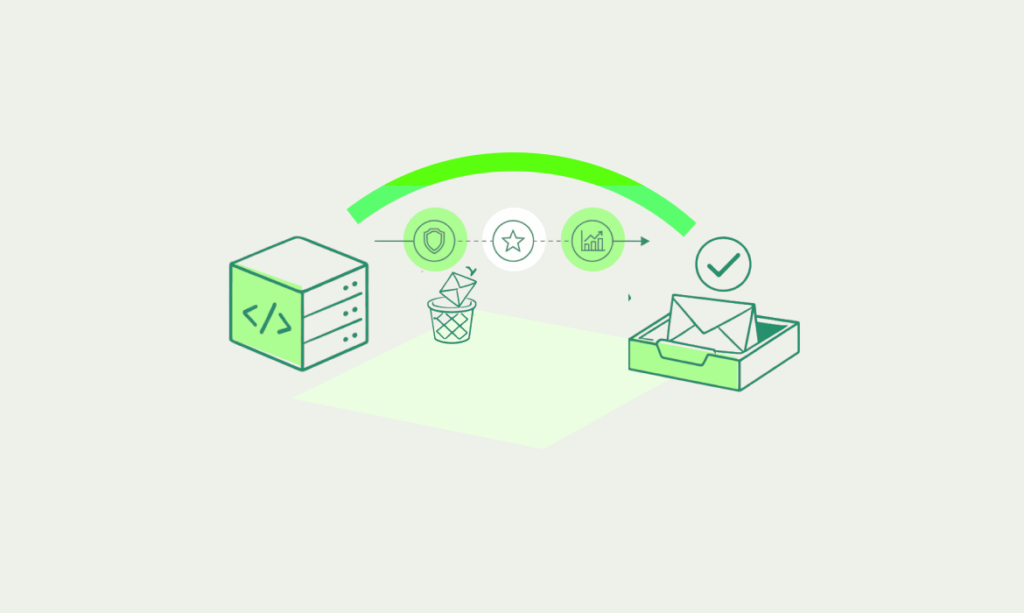

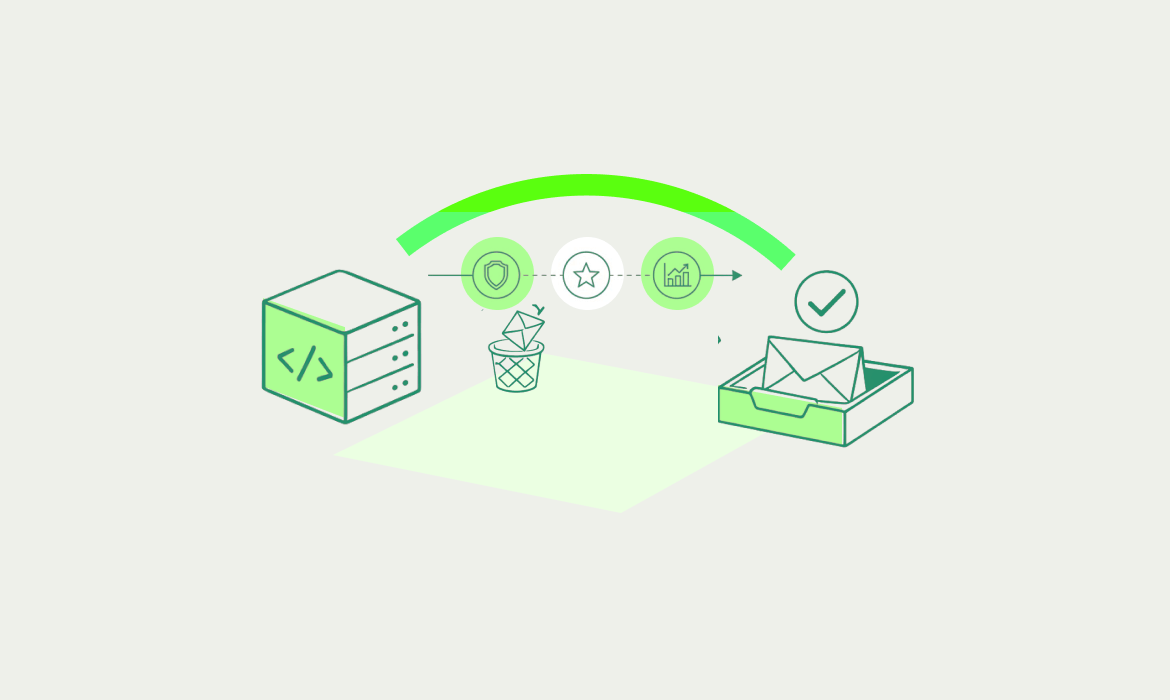
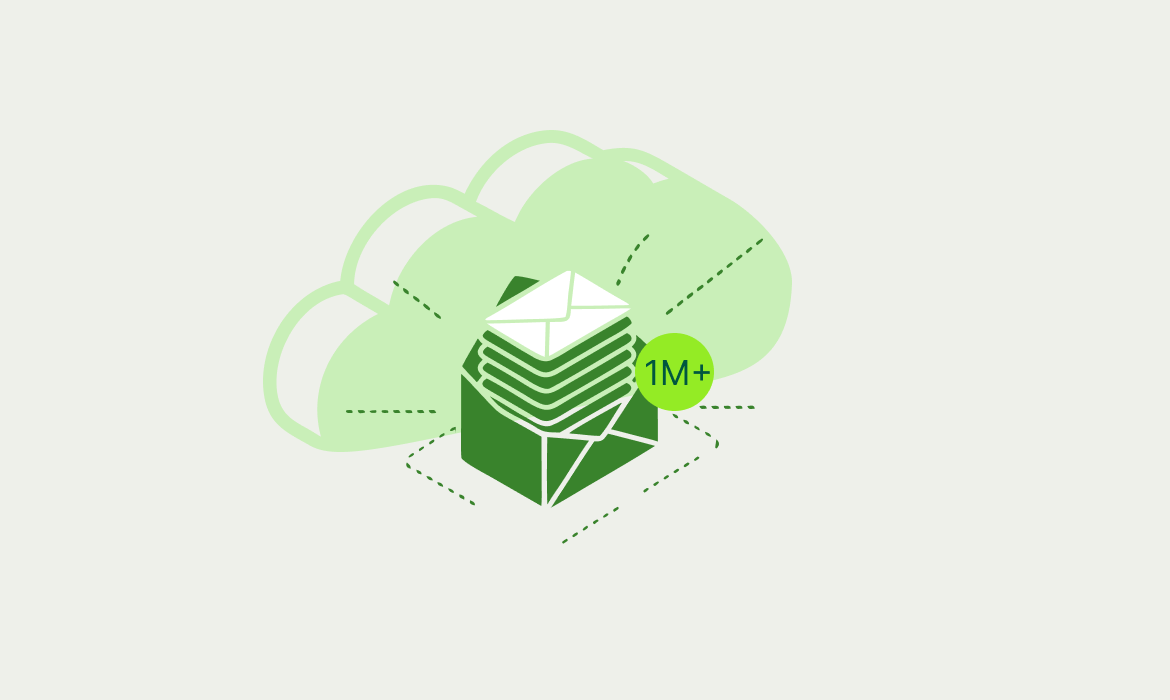
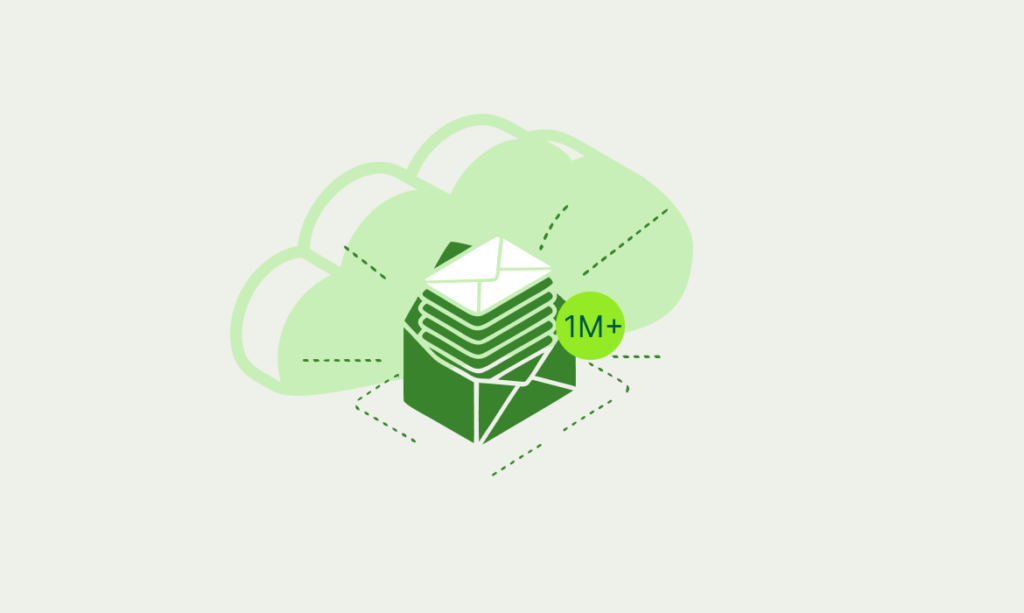

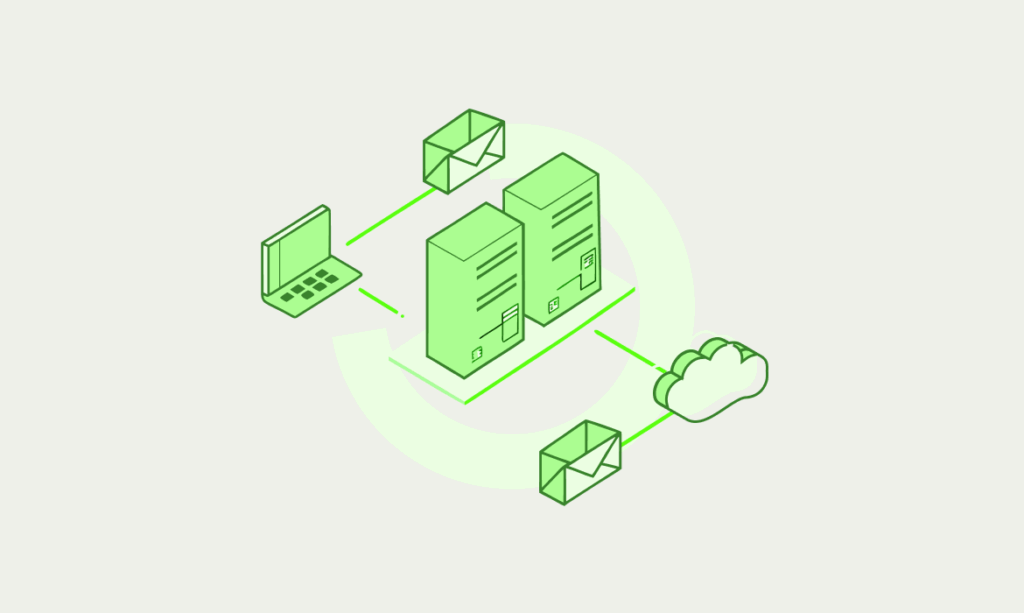




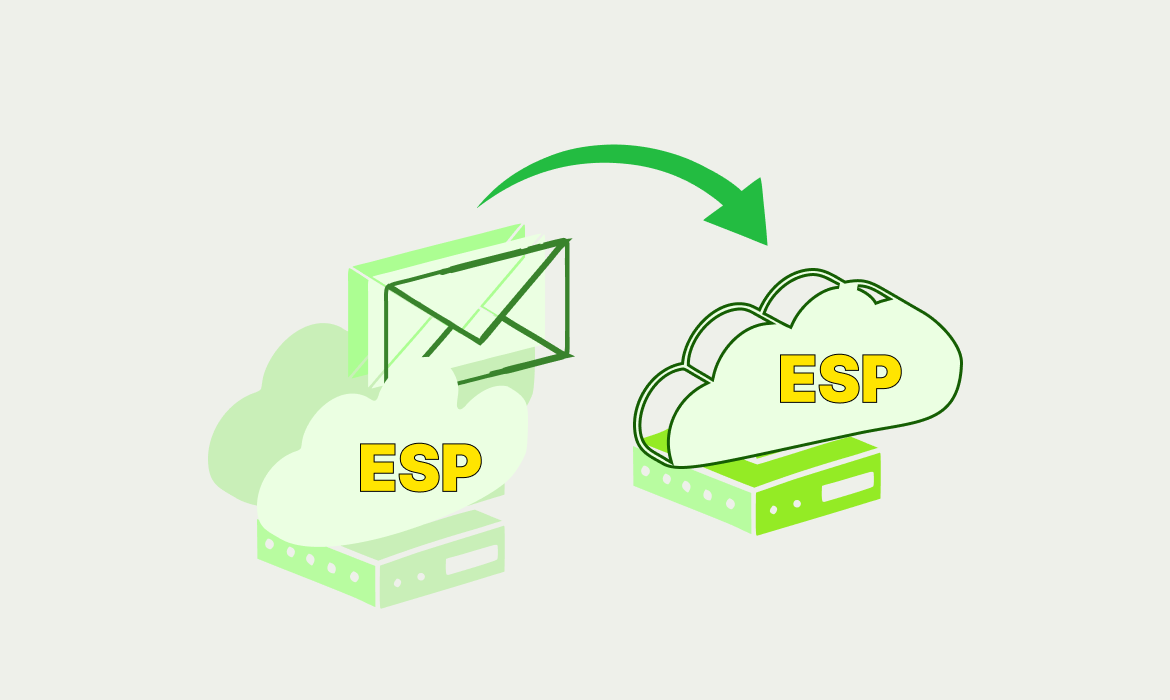
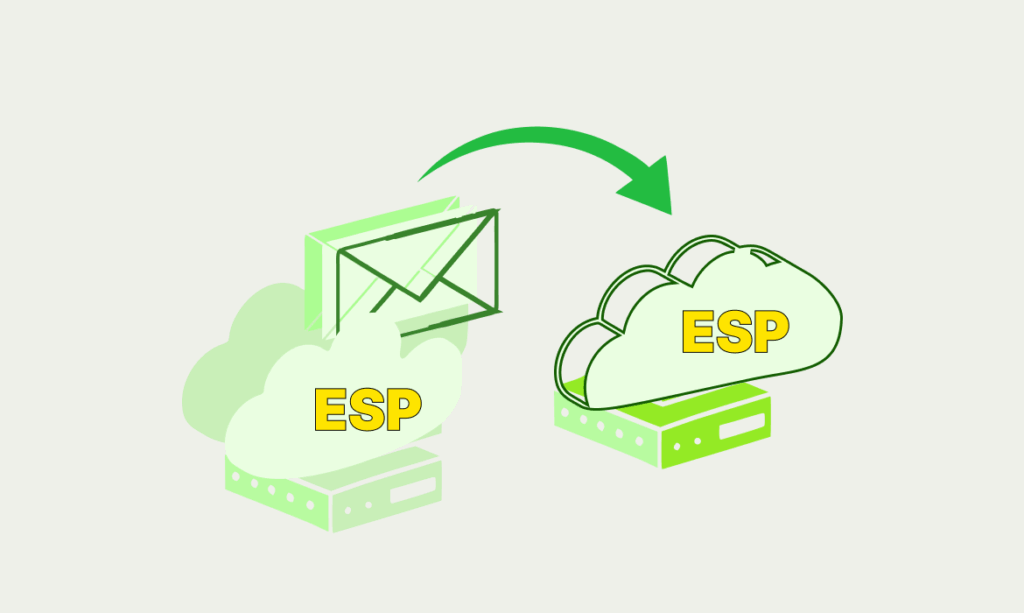


![7 Best Email Automation Platforms in 2025 [Free & Paid Options]](https://www.emailplatformreview.com/wp-content/uploads/2025/07/next.png)

